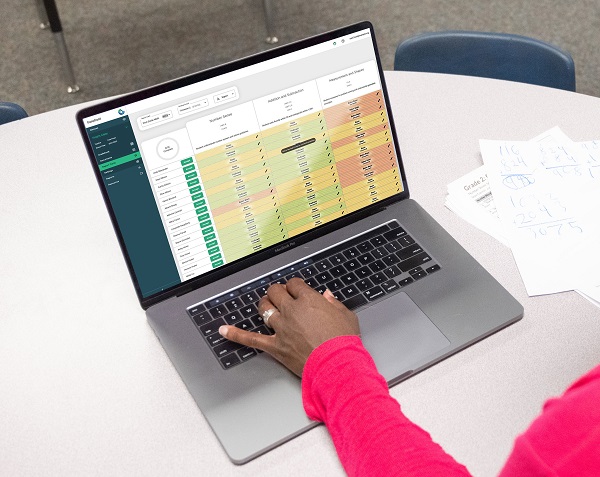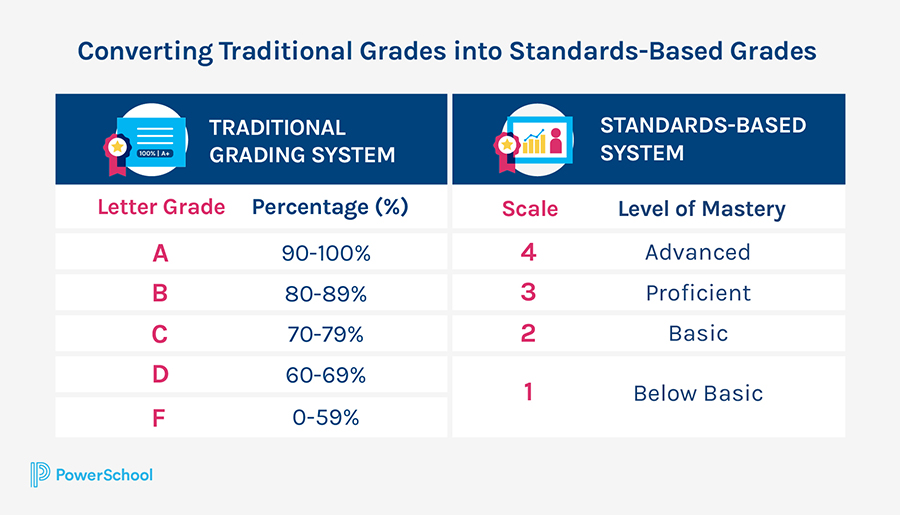If your school or district embraces a standards-based grading system, your staff has already done much of the hard work of changing how teachers, leaders, and parents understand student learning. The standards-based mindset prioritizes the most recent information about student mastery of grade-level concepts and skills. It changes the ways teachers consider student learning and students look at their own growth. It also changes how teachers talk to other teachers, parents, and leaders. For those that want to shift to a standards-based grading system, much of the current literature can help you focus on the importance of this shift. It will also help you understand the complexities and potential pitfalls to avoid along the way.
In the ever-growing collection of books and articles about standards-based grading, one standards-based grading topic is largely overlooked: the tools that teachers will need in order to make the shift both manageable and meaningful. Software tools must be a part of the solution, and far too often they are a barrier.
New Standards-Based Grading Systems & Traditional Software
Software should be dynamic. Yet, it is often software that forces teachers to continue to use traditional grading practices. This is because the grading software systems that most districts use today do not support standards-based grading. Most software systems in place were built on traditional grading paradigms; percentage-based, points oriented (not performance) and built to average results.
Instead of redesigning their tools, education software companies provide tools to “translate” between traditional and standards-based grading systems. You can see this in the example from Powerschool below. In this way, they suggest that standards-based grading is simply an effort to change from a 0 to 100 to a 0 to 4 scale. The software does not support a radically different way of collecting and understanding information about student performance on grade-level concepts and skills.
Collect More Evidence & Value More Recent Evidence
Standards-based grading requires teachers to collect more specific evidence about student learning. In traditional grading systems, teachers would collect points for assignments: tests, quizzes, homework, and other work samples from students. In a standards-based classroom, they will consider performance task by task. This is because different tasks align with different standards.
In the absence of a consistent grading system, grading practices will start to vary considerably from classroom to classroom:
- Some teachers will continue to use traditional grading practices. They will translate grades to a 1-4 scale, as suggested in the PowerSchool example above.
- Others may collect test and assignment level information that combines ideas from a collection of standards. They will then transform those results into information about student performance across standards, neglecting individual standards.
- Other teachers may spend significant time creating their own spreadsheets to collect standards-aligned information to track student progress. These are ambitious teachers, but it creates systemic inefficiencies: it burdens teachers with creating spreadsheets, introduces inconsistencies from class to class, and fails to achieve a system-wide transformation.
Within this effort, the teachers most likely to struggle most are those newest to the profession. For teachers that have not already established systems for keeping track of student learning, they may not develop a system at all. When it is time to record grades, they may fill them in as well as they can, simply following their feelings of how students are doing, rather than relying on a solid body of evidence. This opens the door wide open for bias to enter. Grades become the impressions of teachers rather than carefully considered evidence of performance.
Get the Tools to Commit to Equitable Grading Practices
Through the pandemic and the BLM movement, as a country we learned more about systemic racism. We learned as a country how unconscious bias underpins our school systems. More than any other practice at school, the practice of evaluating and assessing student work, grading, is built on these biases. Your district has done so much of the work of:
- Setting the standards-based learning vision
- Identifying the curricula and assessments to support your standards-based grading system implementation
- Communicating with parents and developing new report card language
Do not fall short of adopting the technology that will support more equitable grading practices in your district. These tools are essential to an effective standards-based grading implementation.
Maybe technology is not as fun as some of the other elements that impact student learning, but it is just as necessary. Provide your teachers with the tools that support the shift to standards-based grading, and you will find that the conversations, collaborative efforts, and of course, grades, that come from your schools, will put the most recent information about student learning in evidence.
If you are interested in our own tools to support standards-based grading in your district, watch a quick demo or contact us today for a personalized overview and conversation.
About us and this blog
Our team and tools help schools implement standards-based grading, streamline assessment systems, and use meaningful data to drive decision-making.
Interested in Learning More?
Download our free Educator's Guide to Standards-Based Grading to access a roadmap to improve standards-based grading systems in your schools.
More from our blog
See all postsForefront is the only assessment data solution optimized for classroom assessment results, leveraging these results to fuel instruction, PLCs, and grading. Elevate meaningful assessment data district-wide to transform how you understand and communicate about student learning across your schools.
Copyright © 2025 Forefront Education, Inc. All Rights Reserved.









